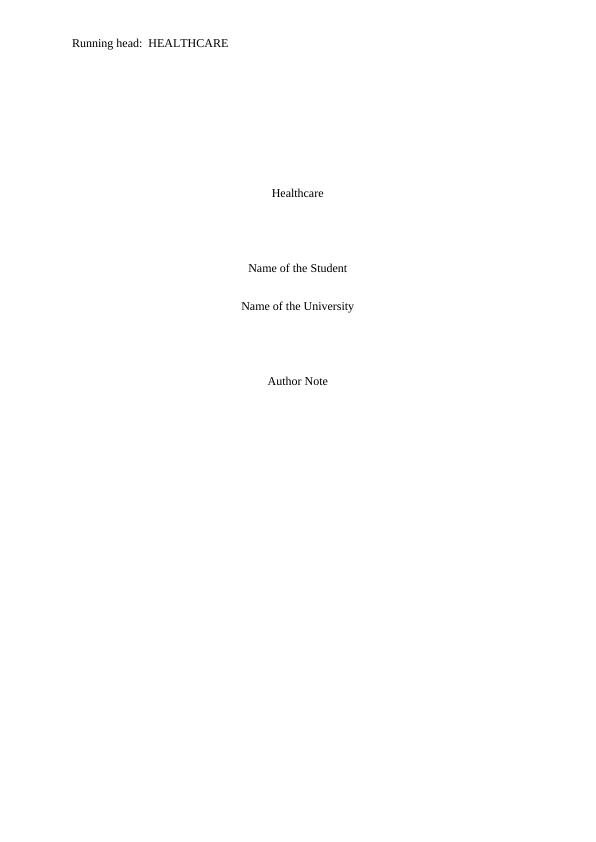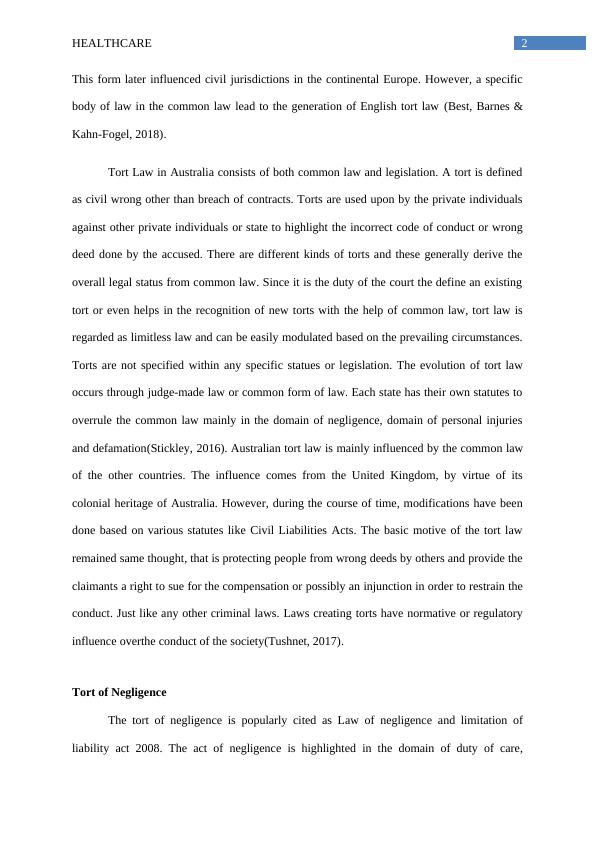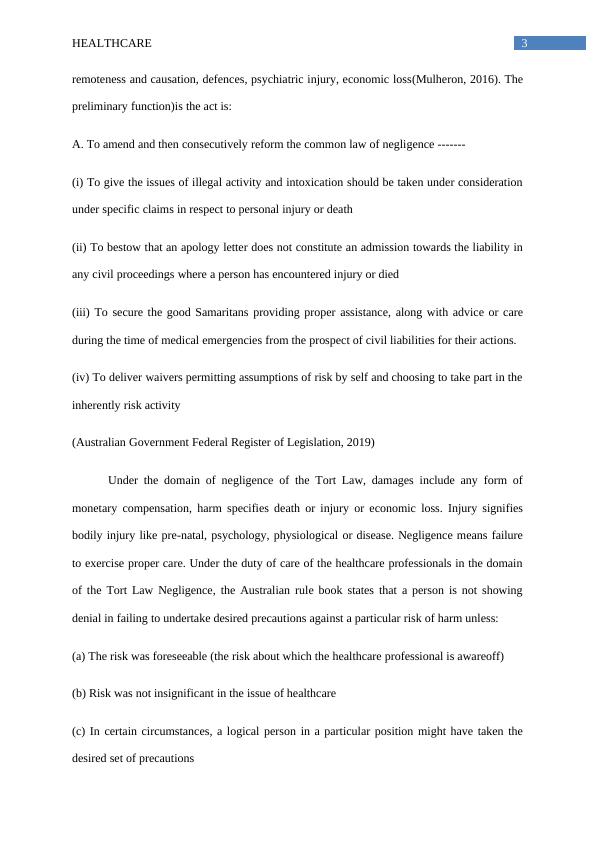Tort Law of Negligence in Australian Healthcare
12 Pages3302 Words1 Views
Added on 2022-12-26
About This Document
This essay provides an overview of the development and application of tort law in the Australian healthcare system, with a focus on the tort of negligence and the duty to warn. It discusses the standards of care for healthcare professionals and the role of tort law in promoting high quality standards and compensating injured patients.
Tort Law of Negligence in Australian Healthcare
Added on 2022-12-26
ShareRelated Documents
End of preview
Want to access all the pages? Upload your documents or become a member.
Tort Law and Duty of Care: Liability of Extortionate Plc for Injury of Samantha
|7
|1830
|39
Tort Law, Liability, and Damages
|14
|4326
|67
Understanding the Law of Tort and Liability in Negligence
|5
|960
|428
Health Care Law and Legislation
|5
|883
|96
Purpose of Civil Law Assignment
|10
|1348
|418
Duty of Care in Armed Forces, Police, and Domestic Violence Cases
|8
|2840
|79




